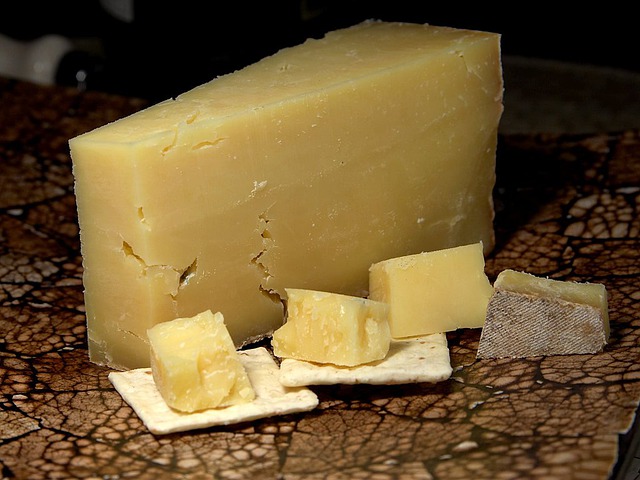
Cheese made by coagulating and fermenting casein contained in milk is cut and eaten, and it is widely used as a main ingredient in various dishes such as salads, pizza, fondue, sandwiches, and processed foods. Compared to milk of the same weight, it contains 5 times more calcium and 7 times more protein than normal milk.
Cheese has a variety of flavors and shapes depending on the region in which it is manufactured, depending on the different aging processes, pasteurization, and manufacturing methods such as milk fat content ratio, and it is known that there are currently about 1,000 types. According to the type of cheese that is changed during production, the ratio of nutrients also varies slightly. So today, let’s take a look at the various types of cheese and their effects one by one.
Benefits of Different Types Of Cheese
1. Mozzarella Cheese
Mozzarella cheese, one of the most familiar cheeses, is one of the most famous cheeses in Italy and has the characteristic of being an unripe soft cheese. Due to its elongated shape, chewy texture, and relatively mild flavor compared to other cheeses, it is widely used as a main ingredient in various dishes such as pizza and salads. In addition, mozzarella cheese has a relatively low sodium content compared to other cheeses, as well as contains a large amount of high-quality protein, which is known to have several health benefits, such as restoring energy and increasing muscle mass. In addition, it has the effect of suppressing inflammation, which is the cause of various chronic diseases, and it is reported to have excellent benefits as prebiotics that serve as food for beneficial intestinal bacteria and help improve the intestinal environment.
2. Cheddar Cheese
Cheddar cheese, which originated in the Cheddar region of Somerset, England, is one of the most familiar cheeses along with mozzarella cheese. Due to its unique color and savory and salty taste, it is also widely used in various dishes such as sandwiches, salads, hamburgers, and canapes.
In addition to abundant protein and calcium, it is known to have excellent effects on bone health and intestinal function improvement due to its high content of lactic acid bacteria. It is also known to have beneficial effects. In addition, the effect of reducing severe bad breath and helping to improve the overall health of the oral cavity, including gums and teeth, is also a health benefit that can be obtained by consuming cheddar cheese. However, it is recommended to consume moderate amounts because it is high in calories and high in fat, which can cause problems such as weight gain if consumed in excess.
3. Gouda Cheese
The large disc-shaped Gouda cheese is said to have been named Gouda cheese because it was sold at Gouda in the Netherlands. It has a characteristic that the texture and taste change depending on the aging period by coagulating pasteurized milk through a non-heat pressing method. With a high content of vitamin K, called an anti-hemorrhagic vitamin, Gouda cheese not only plays an essential role in blood coagulation, but also increases the absorption rate of calcium and is involved in the synthesis of proteins that make up bones, thereby promoting bone health and preventing osteoporosis. It is also said to help prevent related diseases. However, it is recommended to consume a moderate amount of Gouda cheese because it has a high sodium content.
4. Cottage Cheese
Cottage cheese, characterized by its white granular shape, is characterized by its unique nutty flavor, soft texture, and slightly sour taste. Compared to other cheeses, it has a low fat content and is relatively low in calories, so it is also a cheese that is consumed a lot when dieting. It is also said to have a good effect in preventing muscle loss, which is easy to occur during diet, due to its rich protein content. Cottage cheese is widely used not only in salads, but also as an ingredient in various dishes such as sandwiches, pancakes, cheesecakes, and custards.
5. Ricotta Cheese
Ricotta cheese, which has a lot of similarities to the cottage cheese introduced earlier, has a characteristic taste that combines sweet and sour flavors with a soft texture. Ricotta is derived from the Italian word ricotta, meaning ‘double-heated’ because it is made through two processes: one heating the milk to make cheese, and the other two processes, cream, etc., added to the boiled whey. It is said that the name cheese was coined. Ricotta cheese, like cottage cheese, has a low fat content and is rich in protein, so it is a cheese eaten a lot when dieting, and it is reported to have several health benefits, such as controlling cholesterol and blood pressure. Ricotta cheese is widely used as an ingredient in salads and as an ingredient in pasta dishes such as lasagna.
6. Blue Cheese
Blue cheese is a cheese made by aging using a blue mold to give it a unique flavor. Depending on the region of manufacture, it is classified into various types such as Gorgonzola, Logfort, Stilton, and Danablu. Blue cheese is often eaten on bread or crackers with pears and apples, and is often used as an ingredient for pizza, salad, steak sauce, soufflé, and pies.
As it contains abundant calcium, it not only helps to promote bone health through strengthening bone density, but also contains abundant vitamin A, which is known to help protect eyesight and strengthen skin mucous membranes.










